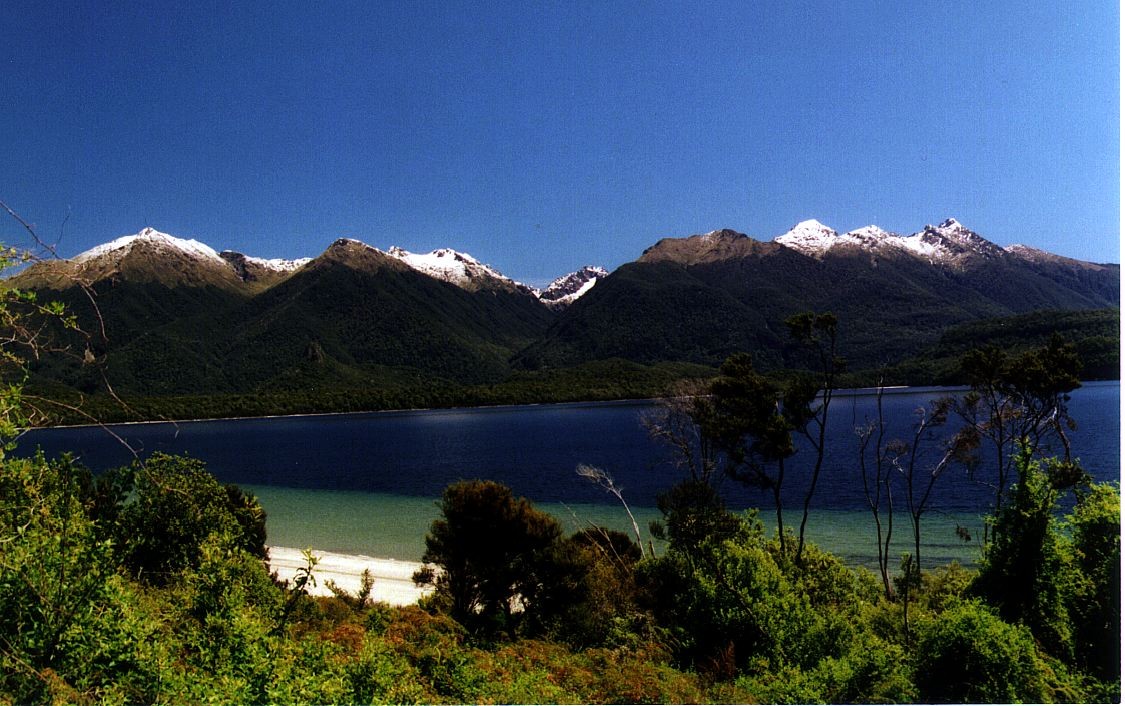Proteodes Clarkei on:
[Wikipedia]
[Google]
[Amazon]
''Proteodes clarkei'' is a species of
 This species is endemic to New Zealand. It has been collected at its type locality of the Hunter Mountains in
This species is endemic to New Zealand. It has been collected at its type locality of the Hunter Mountains in
moth
Moths are a paraphyletic group of insects that includes all members of the order Lepidoptera that are not butterflies, with moths making up the vast majority of the order. There are thought to be approximately 160,000 species of moth, many of w ...
in the family Depressariidae
Depressariidae is a family of moths. It has formerly been treated as a subfamily of Gelechiidae, but is now recognised as a separate family, comprising about 2,300 species worldwide.Heikkilä, M. ''et al''. 2014: Morphology reinforces proposed mo ...
. It is endemic
Endemism is the state of a species being found in a single defined geographic location, such as an island, state, nation, country or other defined zone; organisms that are indigenous to a place are not endemic to it if they are also found elsew ...
to New Zealand
New Zealand ( mi, Aotearoa ) is an island country in the southwestern Pacific Ocean. It consists of two main landmasses—the North Island () and the South Island ()—and over 700 smaller islands. It is the sixth-largest island count ...
and has been collected in locations around Manapouri
Manapouri is a small town in Southland / Fiordland, in the southwest corner of the South Island, in New Zealand. The township is the westernmost municipality in New Zealand. Located at the edge of the Fiordland National Park, on the eastern ...
in alpine habitats. Both the male and female adults of the species are brightly coloured but the female is brachypterous
Brachyptery is an anatomical condition in which an animal has very reduced wings. Such animals or their wings may be described as "brachypterous". Another descriptor for very small wings is microptery.
Brachypterous wings generally are not functi ...
, that is it has reduced wing size in comparison to the male. Adults have been recorded as being on the wing in January and February.
Taxonomy
This species was first described byAlfred Philpott
Alfred Philpott (15 December 1870 – 24 July 1930) was a New Zealand museum curator, entomologist and writer. He was born in Tysoe, Warwickshire
Warwickshire (; abbreviated Warks) is a county in the West Midlands region of England. The ...
in 1926 using specimens collected by Charles Clarke
Charles Rodway Clarke (born 21 September 1950) is a British Labour Party politician, who was the Member of Parliament (MP) for Norwich South from 1997 until 2010, and served as Home Secretary from December 2004 until May 2006.
Early life
Th ...
and Stewart Lindsay in January in the Hunter Mountains
The Hunter Mountains of Lake Manapouri, New Zealand, were named by surveyor James McKerrow after the famous anatomist John Hunter. The Hunter Mountain Range covers an area between The South Arm and Hope Arm of Lake Manapouri South to the Green ...
at an altitude of around 4000 ft. Philpott named the species after Clarke. The male holotype
A holotype is a single physical example (or illustration) of an organism, known to have been used when the species (or lower-ranked taxon) was formally described. It is either the single such physical example (or illustration) or one of several ...
is held at the Canterbury Museum.
Description
Philpott described the male of the species as follows: He went on to describe the female as follows: The female of the species isbrachypterous
Brachyptery is an anatomical condition in which an animal has very reduced wings. Such animals or their wings may be described as "brachypterous". Another descriptor for very small wings is microptery.
Brachypterous wings generally are not functi ...
.
Distribution
 This species is endemic to New Zealand. It has been collected at its type locality of the Hunter Mountains in
This species is endemic to New Zealand. It has been collected at its type locality of the Hunter Mountains in Fiordland
Fiordland is a geographical region of New Zealand in the south-western corner of the South Island, comprising the westernmost third of Southland. Most of Fiordland is dominated by the steep sides of the snow-capped Southern Alps, deep lakes, ...
, including Mt Titiroa in early February. The Hunter Mountains are near Manapouri
Manapouri is a small town in Southland / Fiordland, in the southwest corner of the South Island, in New Zealand. The township is the westernmost municipality in New Zealand. Located at the edge of the Fiordland National Park, on the eastern ...
.
Behaviour
Adults of this species is on the wing in January and February.Habitat
This species can be found in a rare ecosystem - granite sand plains in the alpine zone of the South Island.References
{{Taxonbar, from=Q14175506 Moths described in 1926 Moths of New Zealand Depressariidae Endemic fauna of New Zealand Taxa named by Alfred Philpott Endemic moths of New Zealand